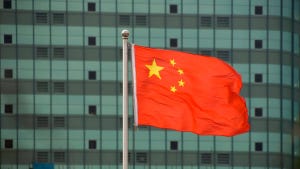Mobile networks market leader saw its margins and profits take a hammering in Q1 but it's still confident about future profitability
April 24, 2013

Ericsson AB's CEO and CFO found themselves under pressure Wednesday morning following a first-quarter financial report that included lower margins, much lower profits and regional delays.The Swedish giant, still the world's largest telecom vendor, reported first-quarter revenues of 52 billion Swedish kronor (US$7.87 billion), up by 2 percent compared with a year ago. Without unfavorable currency exchange rate changes, the vendor says like-for-like sales were up by 7 percent. (See Ericsson Retains Its Crown – Barely.)While that was an improvement, most of its headline financial numbers headed in the other direction. Its gross margin was down to 32 percent from 33.3 percent a year ago (so lower than rival Nokia Siemens Networks currently), its operating margin (excluding the impact of joint ventures) plummeted to 4.1 percent compared with 20.6 percent a year ago and its net income was down by 86 percent to SEK1.2 billion ($182 million). (See NSN Maintains Momentum.) Those numbers were affected by (among other things) ongoing restructuring costs, the low margins associated with network rollout projects, a hiatus in Latin America (where operators are waiting for 4G spectrum, leaving Ericsson assets "idle") and the aforementioned currency rate changes. CEO Hans Vestberg and CFO Jan Frykhammar are sticking with the line they've held for the past year: Ericsson is laying the ground for a more profitable future by engaging in new network modernization projects that involve a lengthy initial stage of low-margin rollouts but which will be followed by higher-margin capacity expansion deals. (See Ericsson Spies Networks Payoff.)Vestberg said he couldn't recall a time when Ericsson was involved in so many network rollouts, not just in Europe, where there are a number of network modernization projects underway, but in all regions. Ultimately, "this means a lot of installed base and that's good news for Ericsson," added the CEO. But they've been talking about this trend for more than a year, so when does the tide turn to more profitable engagements? CFO Frykhammar says that will happen gradually though this year and, barring any unforeseen market changes, the margins should show signs of improvement during the second half of 2013. "When we enter into 2014 there should be no material impacts left on rollouts and it will be all upside," stated the CFO.Investors appear to be on board with this message as, despite the margin pressures, the vendor's share price was largely unchanged in trading on the Stockholm exchange. The mood will likely change, though, if the numbers aren't looking healthier by the end of 2013. The CEO and CFO had other things to talk about, though. Here are the highlights:
Vestberg remains confident that Ericsson's investment in OSS and BSS assets, mainly through acquisitions, will pay off as higher volumes of data and video traffic force operators to invest more in Service Provider Information Technology (SPIT) assets.
The opportunity to sell video-related technology and professional services (including managed services) to all types of operators will only increase, believes the CEO, who stated that the acquisition of Microsoft Corp.'s Mediaroom IPTV business unit will be "crucial" to future business. (See Ericsson Buys Microsoft's IPTV Unit.)
Ericsson is determined to position itself as a leading player in the software-defined networking (SDN), cloud services enablement and machine-to-machine (M2M) sectors. With regards to SDN, though, the perception might be that Ericsson is behind the curve compared with some of its major network equipment rivals, despite its claims of having a leading position. (See Ericsson Claims SDN Advantage and Alcatel-Lucent Spins Up Its SDN.)
The vendor selection process for 4G LTE suppliers has begun in two major markets -- Russia and China. While commercial negotiations are underway in the former, Vestberg said that China is still in the trial phase and it's harder to predict when licenses will be awarded and deals struck. As Light Reading has reported, though, China Mobile Ltd. appears to be edging closer to making some decisions and has earmarked billions of dollars of capex to 4G for this year. (See China Mobile Seeks 4G Small-Cell Advantage.)
Demand for LTE access equipment is driving demand for HSPA (3G) equipment (because operators need to ensure high performance on complementary 3G connections as they roll out 4G access, said Vestberg), packet core elements and voice-over-LTE capabilities.
Ericsson signed another 12 deals for its SSR routers that are being pitched as key elements in 4G packet core deployments. (See MetroPCS Taps Ericsson for 4G LTE Upgrade.)
More than 30 percent of Ericsson's total revenues came from North America in the first quarter, despite falling sales of CDMA equipment. When asked during the press conference early Wednesday whether ongoing M&A activity among major U.S. carriers might squeeze opportunities in the future, Vestberg responded without directly addressing the question, suggesting there are concerns at Ericsson that any merger activity in the U.S. might hit future sales potential. For the full details, see this earnings release (in PDF format).— Ray Le Maistre, Editor-in-Chief, Light Reading
You May Also Like









